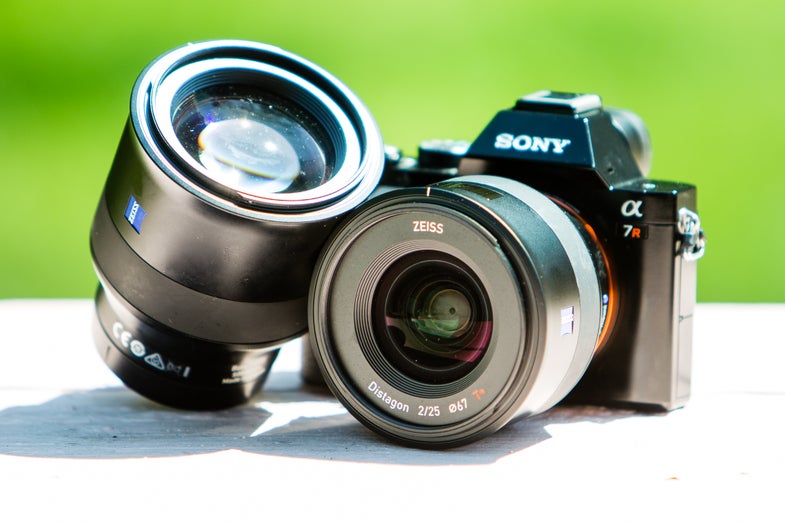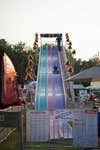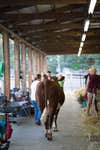Hands-On and Sample Photos: Zeiss 85mm F/1.8 and 25mm F/2 Batis Lenses
We took the new Zeiss lenses to the fair attached to a Sony A7r

We may earn revenue from the products available on this page and participate in affiliate programs. Learn more ›

It seems pretty safe to say that Zeiss sure knows how to make an 85mm lens. They aren’t too shabby when it comes to wide-angle lenses either, so when I got the opportunity to spend time with their new Batis lenses for Sony full-frame E-mount cameras, I was eager to mount them up and head out to shoot.
One of the big talking points when the lenses were first announced was the inclusion of an LED indicator screen right on the lens. It’s a very nice addition, but it’s not something I use all that often. I feel it won’t be something that makes or breaks the lenses for many shooters, but I think it makes a lot of sense. The camera is electronic, the viewfinder is electronic, it only makes sense that the distance scale should be electronic.
When you’re using them, the lenses feel very much like you’d expect Zeiss lenses to feel. I spent some time with the Touit when they were first announced and these certainly still feel like a step up. The focus ring is particularly nice, offering a very smooth action and nice damping, even though the lenses aren’t mechanically driven. That might actually be an important point for some users. The Batis lenses are “focus by wire” which means the ring is electronically linked to the actual focusing action. The ring you turn with your hand is linked to focusing only by electronics, not mechanical pieces. That said, the manual focusing still feels very responsive to me.
With the Touit lenses, I wasn’t quite sold on the autofocus performance, which was likely due–at least in part–to the AF system in the body. I found the Batis lenses to be quicker and smoother, even if they do seem to hunt a bit. I also sometimes found it fairly tricky to lock focus when I was approaching the minimal focusing distance of the lens, especially with the 85mm. It’s times like that the excellent manual focus is greatly appreciated.
The lens hoods on these things are rather beautiful, following a flowing shape that mimics that of the camera’s body. They’re not made of burly metal like the Otus, but that keeps weight down and they also feel very sturdy. I found myself keeping them on pretty much at all times. Even without the hood, however, they aren’t very prone to flaring. Even when I was actively trying to flare the lens a little, both lenses keep the sun corralled rather nicely.
In terms of sharpness, my eyeball tests suggests what you might already suspect: When you get the focus right, both lenses are extremely sharp, even under scrutiny available thanks to the A7r’s big resolution. The bokeh on both lenses is nice and smooth, with round specular highlights thanks to the circular aperture.
One thing I noticed when going through all the images I took was how neutral the images are. I was shooting with everything on neutral mode and the images came out looking fairly flat. Even the JPEGs look a little flat, which is a bit of a departure since I’ve often found some Zeiss lenses to be extremely contrasty. That said, the files that were shot with the Batis lenses hold up extremely well to editing, which is ideal for many shooters (including myself) who edit everything before sharing.
All images in the gallery were shot on the A7r and are unaltered unless noted. The chances are mostly a few little exposure tweaks, but never more than a stop and there are no structural or perspective corrections added to the photos so you can get an idea of what the images actually look like. That 25mm seems excellent in terms of distortion to my eye.
I’m looking forward to shooting a little bit more with these before they go back to the Zeiss mothership, so if there’s something specific you’d like to see, leave it in the comments or ask via Twitter.

Tech Specs: 25mm at F/2 for 1/500th sec at ISO 400

Tech Specs: 85mm at F/1.8 for 1/8,000th sec at ISO 1600

Tech Specs: 85mm at F/1.8 for 1/1,250th sec. at ISO 1,250

Tech Specs: 85mm at F/1.8 for 1/100th sec. at ISO 1,250

Tech Specs: 85mm at F/1.8 for 1/125th sec. at ISO 1,250

Tech Specs: 85mm at F/1.8 for 1/8,000th sec. at ISO 1,250

Tech Specs: 85mm at F/2.8 for 1/125th sec. at ISO 800

Tech Specs: 25mm at F/2 for 1/1,000th sec. at ISO 100

Tech Specs: 85mm at F/1.8 for 1/640th sec. at ISO 400

Tech Specs: 85mm at F/1.8 for 1/400th sec. at ISO 100

Tech Specs: 85mm at F/1.8 for 1/100th sec. at ISO 400

Tech Specs: 85mm at F/1.8 for 1/100th sec. at ISO 250

Tech Specs: 25mm at F/2 for 1/80th sec. at ISO 400

Tech Specs: 85mm at F/1.8 for 1/50th sec at ISO 8,000

Tech Specs: 85mm at F/2.8 for 1/400th sec. at ISO 200

Tech Specs: 85mm at F/1.8 for 1/8,000th sec. at ISO 400

Tech Specs: 85mm at F/1.8 for 1/8,000th sec. at ISO 400

Tech Specs: 85mm at F/2.8 for 1/3,200th sec. at ISO 400

Tech Specs: 25mm at F/2.8 for 1/6,400th sec. at ISO 400

Tech Specs: 25mm at F/2.8 for 1/500th sec. at ISO 400

Tech Specs: 25mm at F/5.6 for 1/200th sec. at ISO 400

Tech Specs: 25mm at F/5.6 for 1/500th sec. at ISO 400

Tech Specs: 25mm at F/2 for 1/4,000th sec. at ISO 400

Tech Specs: 25mm at F/2 for 1/1,250th sec. at ISO 400

Tech Specs: 85mm at F/1.8 for 1/8,000th sec. at ISO 400

Tech Specs: 85mm at F/1.8 for 1/5,000th sec. at ISO 400

Tech Specs: 85mm at F/1.8 for 1/2,000th sec. at ISO 400

Tech Specs: 85mm at F/2.8 for 1/8,000th sec. at ISO 400

Tech Specs: 85mm at F/2.8 for 1/400th sec. at ISO 400

Tech Specs: 85mm at F/1.8 for 1/640th sec. at ISO 2,000

Tech Specs: 85mm at F/1.8 for 1/2,000th sec. at ISO 1,250

Tech Specs: 85mm at F/1.8 for 1/2,500th sec. at ISO 2,000

Tech Specs: 85mm at F/5.6 for 1/3,200th sec. at ISO 2,0000
